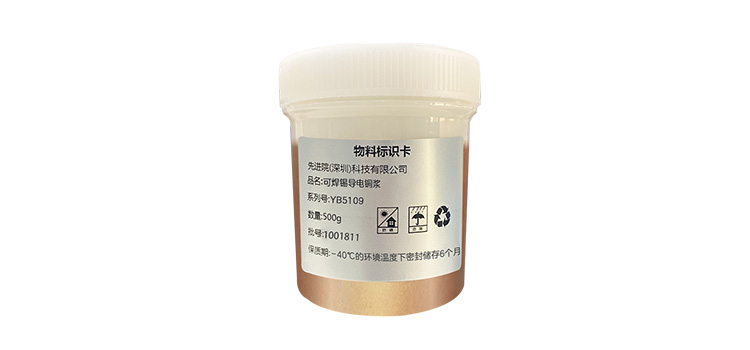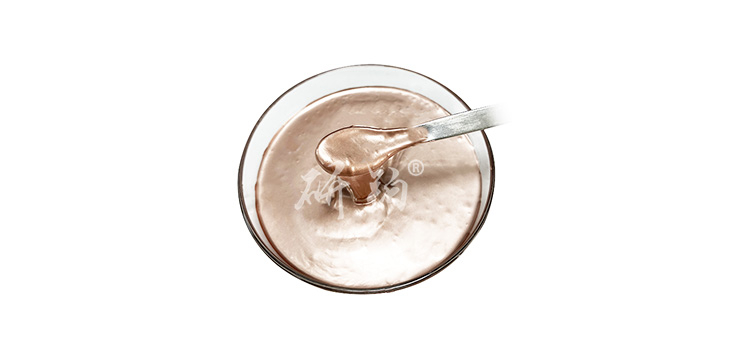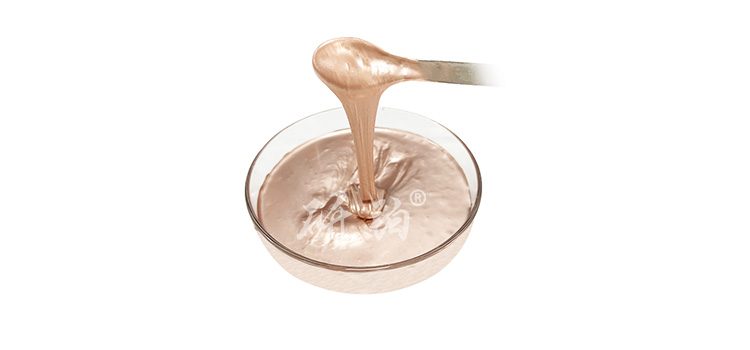1、 Introduction
With the rapid development of the electronics industry, the requirements for conductive materials in electronic packaging technology are increasing day by day. Solderable conductive copper paste is an important electronic packaging material, and its performance directly affects the quality and lifespan of electronic products. Among them, copper content is one of the key parameters of solderable conductive copper paste, which may have a significant impact on the lifespan of the cured layer. Therefore, in-depth research on the relationship between copper content and the lifespan of the cured layer has important practical significance.
2、 Experimental Materials and Methods
(1) Experimental materials
(2) Experimental Design
Five sets of YB5109 solderable conductive copper paste samples with different copper contents were carefully prepared, with copper contents set at 30%, 40%, 50%, 60%, and 70%, respectively. Uniformly coat these samples onto a ceramic substrate with dimensions of 50mm × 50mm × 1mm, and prepare cured layer samples according to standard curing process (curing temperature 150 ℃, curing time 60 minutes). Prepare 10 samples of each copper content for subsequent testing.

(3) Testing method
- Thermal cycle testUsing a high-precision thermal cycling test chamber, set the temperature range from -40 ℃ to 120 ℃, control the temperature rise and fall rate at 10 ℃/minute, and conduct 500 cycles of testing. After every 50 cycles, use a four probe resistance tester to measure the resistance value of the cured layer sample, and use an optical microscope to observe whether there are microscopic defects such as cracks and peeling on the surface of the sample. Record the number of cycles during the testing process when the resistance value of samples with different copper contents exceeds the initial value by 20% or obvious microscopic defects appear.
- Humidity testPlace the sample in a constant temperature and humidity test chamber with a humidity of 90% RH for a duration of 1000 hours. During the testing process, an insulation resistance tester is used every 100 hours to measure the insulation resistance value of the sample, and the appearance of the sample is observed for discoloration, expansion, and other phenomena. The standard for determining sample failure is to reduce the insulation resistance value to 50% of the initial value or to observe significant changes in appearance, and record the failure time of samples with different copper contents.
- Salt spray test: According to the standard salt spray test method (GB/T 10125-2012), place the sample in the salt spray test chamber, set the salt spray concentration as 5% NaCl solution, spray pressure as 0.07MPa -0.17MPa, and test time as 720 hours. During the testing period, samples were taken out every 120 hours, and the mass loss of the samples was measured using an electronic balance. The corrosion morphology on the surface of the samples was observed using a scanning electron microscope (SEM). Samples with mass loss exceeding 10mg/cm ² or severe corrosion pits on the surface were used as the basis for sample failure. The salt spray resistance life of samples with different copper contents was calculated
3、 Results and Discussion
(1) Thermal cycle test results
During the thermal cycling test, the sample with a copper content of 30% showed an average increase in resistance of 35% after 200 cycles, and three samples exhibited slight cracks on their surfaces; After 300 cycles, the resistance value of the sample with a copper content of 40% increased by about 25%, and only one sample showed microcracks; When the copper content is 50%, the increase in resistance value after 400 cycles is controlled within 20%, and no obvious surface defects are found. However, the resistance value of the sample with a copper content of 60% suddenly increased by 40% after 350 cycles, and 4 samples showed local peeling phenomenon; The sample with a copper content of 70% showed significant fluctuations in resistance after 300 cycles, with an average increase of 50%, and most of the samples exhibited obvious cracks and peeling on the surface. Through detailed analysis of the data, it can be concluded that when the copper content is between 40% and 50%, the stability of the cured layer during thermal cycling is relatively high, and the thermal cycling life is longer. This is because within this range of copper content, copper particles can form a relatively uniform and stable conductive network. Under thermal stress, the degree of damage to the conductive network is relatively small, effectively maintaining the conductivity and structural integrity of the cured layer.

(2) Humidity test results
The humidity test data shows that after 400 hours of humidity testing, the insulation resistance value of the sample with a copper content of 30% decreased by 60%, and there was obvious discoloration and slight expansion on the surface of the sample; The insulation resistance value of the sample with a copper content of 40% decreased by about 40% after 600 hours, and the appearance change was relatively small; When the copper content is 50%, the insulation resistance value only decreased by 30% during the 800 hour test, and there was no significant appearance deterioration. The insulation resistance of the sample with a copper content of 60% decreased by 50% after 500 hours, and at the same time, copper green was formed on the surface; The insulation resistance value of the sample with a copper content of 70% sharply decreased by 70% within 400 hours, and severe oxidation and expansion phenomena appeared on the surface. It can be seen that in high humidity environments, the cured layer with a copper content of 40% -50% exhibits good moisture resistance and a relatively long lifespan. This is because an appropriate copper content can ensure certain conductivity and reduce oxidation reactions caused by excessive copper content. At the same time, a lower copper content also reduces the damage to the insulation performance of the cured layer caused by chemical reactions caused by water infiltration.
(3) Salt spray test results
The salt spray test results showed that the sample with a copper content of 30% had a mass loss of 15mg/cm ² after 300 hours of salt spray testing, and a large number of corrosion pits appeared on the surface; The sample with a copper content of 40% has a mass loss of about 12mg/cm ² after 400 hours, and the degree of corrosion is relatively mild; When the copper content is 50%, the quality loss is controlled within 10mg/cm ² during the 500 hour test, and the surface corrosion morphology is relatively uniform. The sample with a copper content of 60% had a mass loss of over 10mg/cm ² after 400 hours and severe localized corrosion; The sample with a copper content of 70% experienced a mass loss of up to 18mg/cm ² within 350 hours, with deep corrosion pits and accumulation of copper corrosion products on the surface. Comprehensive analysis shows that when the copper content is between 40% and 50%, the cured layer has good salt spray resistance and a relatively long salt spray life. This is because the range of copper content can form effective conductive pathways while giving the cured layer a certain degree of density, effectively preventing corrosive ions in salt spray from corroding the internal structure.

4、 Conclusion
Through the review of Advanced Institute (Shenzhen) Technology Co., Ltd
Research Platinum Brand YB5109 Solderable Conductive Copper PasteThe study on the influence of changes in copper content on the service life of cured layers has found that under various testing conditions such as thermal cycling, humidity, and salt spray, the copper content is not necessarily better, but there is a more suitable range. Within this range, the cured layer can maintain good performance stability under different environmental factors and has a longer lifespan. This research result has important guiding significance for the formulation optimization, production process improvement, and application in electronic packaging of solderable conductive copper paste. It helps to improve the reliability and service life of related electronic products, and also provides valuable reference data for further research on the performance of conductive copper paste. In future research, the synergistic effect between copper content and other additives or process parameters can be further explored to enhance the comprehensive performance of solderable conductive copper paste.
The above data is for reference only, and specific performance may vary due to production processes and product specifications.







